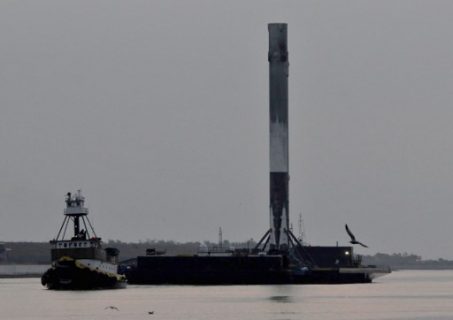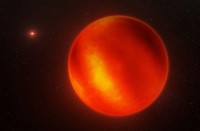
by Kerry Sheridan
Agence France Presse
MIAMI, United States (AFP) — A lightning strike near Cape Canaveral forced SpaceX to delay until Saturday its first-ever cargo delivery to the astronauts living in orbit using a vessel that has already flown to space once before, the National Aeronautics and Space Administration said Thursday.
The lightning did not hit any of SpaceX’s equipment but happened within 10 miles (16 kilometers) of the launch pad.
The strike happened about 25 minutes before the scheduled launch at 5:55 pm (2155 GMT).
“The lightning flight rule requires 30 minutes for you to clear that before it is safe to launch,” NASA spokesperson Mike Curie said.
“Weather has gotten us today.”
The next opportunity for SpaceX’s 11th commercial resupply mission aboard an unmanned Dragon cargo ship is now 5:07 pm (2107 GMT) on Saturday, and will be broadcast live on NASA’s website.
The weather forecast for Saturday is 60 percent favorable, NASA said.
Refurbished capsule
The gumdrop-shaped Dragon spaceship has been refurbished, after previously toting food and supplies to the International Space Station in September 2014, and then splashing back down in the ocean intact.
“The majority of this Dragon has been in space before,” said Hans Koenigsmann, SpaceX’s vice president of mission assurance.
The heat shield, however, has been replaced, he told reporters at a pre-launch press conference on Wednesday.
The re-use of an old spaceship is the latest move in SpaceX’s long-running strategy to make space flight cheaper and more environmentally friendly.
Its main effort has been in recycling rockets, by powering their first stage engines and guiding them back to Earth following launch.
This saves the main portion of the rocket, and avoids jettisoning millions of dollars worth of equipment into the ocean after takeoff.
About 10 minutes after Saturday’s launch, SpaceX will attempt to land the first stage of the Falcon 9 rocket on solid ground back at Cape Canaveral.
The Dragon is packed with almost 6,000 pounds (2,700 kilograms) of science research, crew supplies and hardware.
The supplies for special experiments include live mice to study the effects of osteoporosis and fruit flies for research on microgravity’s impact on the heart.
The spacecraft is also loaded with solar panels and equipment to study neutron stars.
The launch will be the 100th from NASA’s historic launch pad 39A, the starting point for the Apollo missions to the Moon in the 1960s and 1970s, as well as a total of 82 shuttle flights.
© Agence France-Presse








